Explain the principle and use of NAND Flash with examples (2)
5. Bus operation
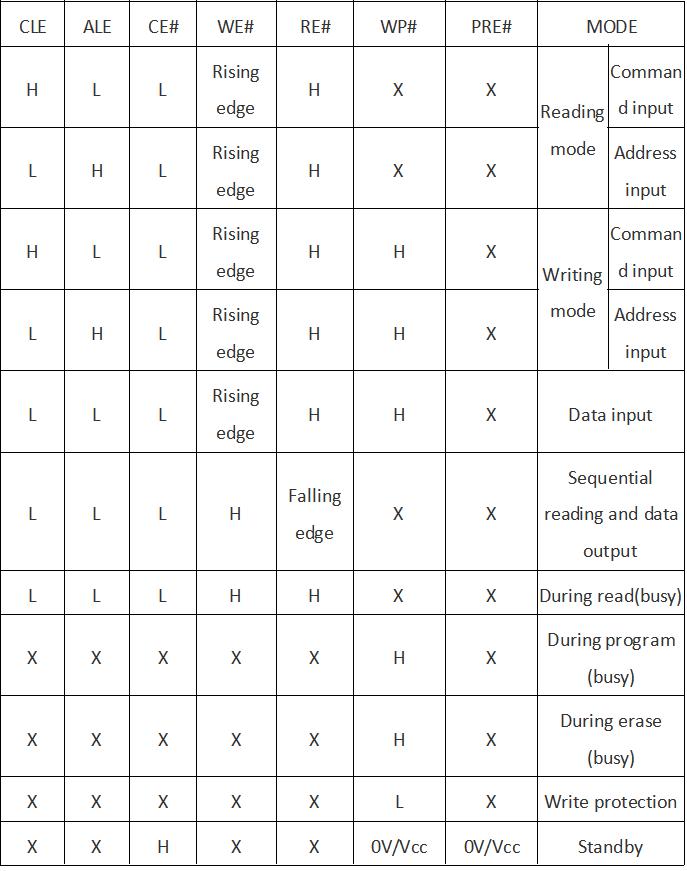
Power-on automatic reading: During power-up, the PRE is VCC and the 3V VCC device automatically transfers the first page to the data register without issuing a command or address latching sequence. When VCC reaches about 2.5V, the internal voltage detector triggers the power-on automatic reading function. In the process of data coping from first page of data to the data register, R/B# is low. When the copy is over, the R/B# becomes higher. Under the action of RE# pulse, the data of the first page can be output in turn.
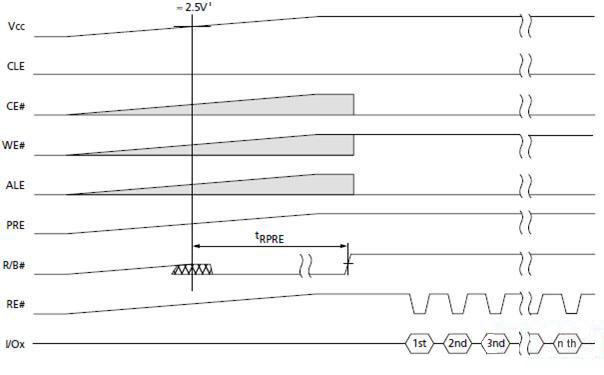
6. Command List
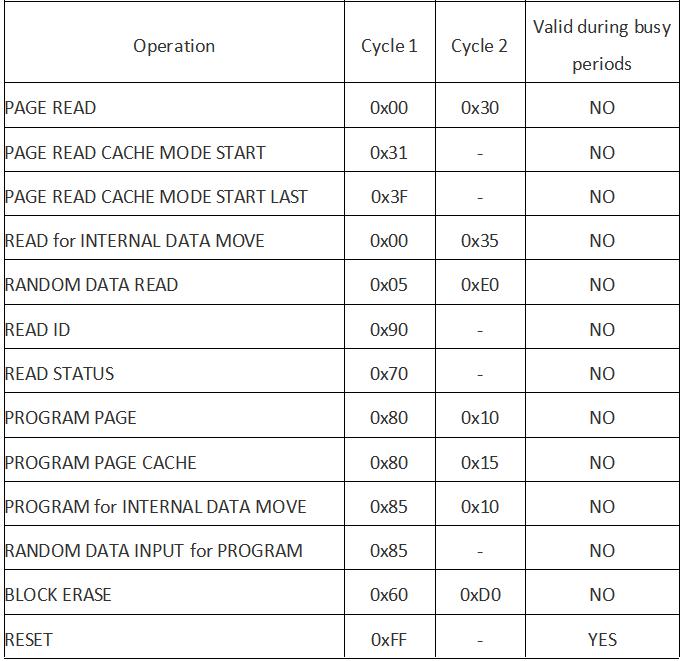
7. PAGE READ,0x00-0x30
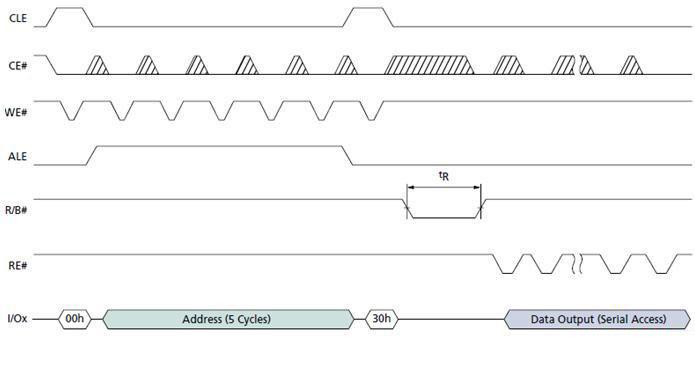
Five address cycles determine the starting address of the readout. Under the effect of RE# pulse, the data is only starting output in turn from this starting address until the end of this page.
8. RANDOM DATA READ,0x05-0xE0
Random data reading is to enable users to set a new column address and increase the flexibility of data readout and then make reading mode enabled after the page reading (0x00-0x30 sequence). There is no limit to the number of releases of this command. But it's just the readout of the current page data.

9. PAGE READ CACHE MODE START,0x31;PAGE READ CACHE MODE START LAST,0x3F
After publishing the PAGE READ command, after R/B# is higher, the 0x31 command is sent. At this time, the contents of data register are transmitted to the cache register, and then the first PAGE READ command can be read sequentially from the cache in order to obtain data. Because this data register is useless, the chip automatically starts reading the next page of PAGE READ command and put them to the data register, improving the speed of reading. Except for the first PAGE READ command, other PAGE READ commands are automatically performed in the background. Use the 0x3f command for the last time to prevent the chip from automatically publishing the PAGE READ command again.
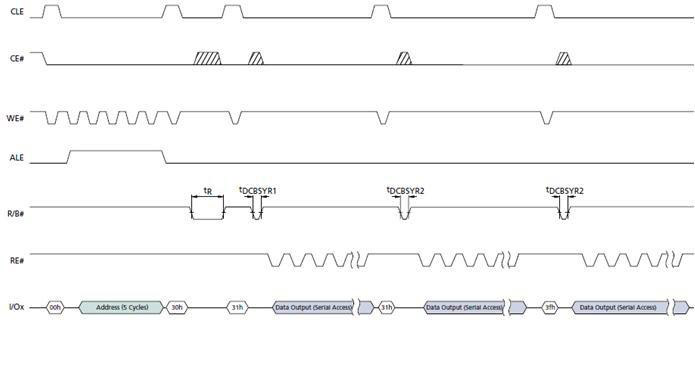
10.READ ID,0x90
Read out the manufacturer's chip identification.
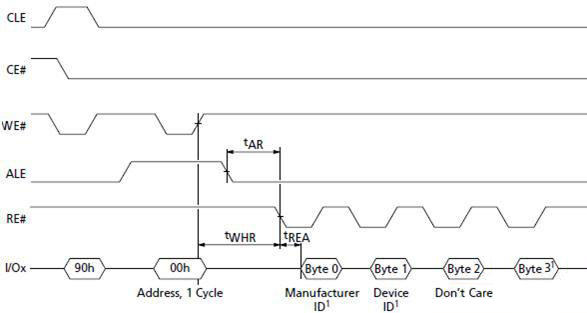
11. READ STATUS,0x70

Read out the 8bit status of the chip. It can be read over and over again by RE# pulses.
Explain the principle and use of NAND Flash with examples (1)
Explain the principle and use of NAND Flash with examples (3)
